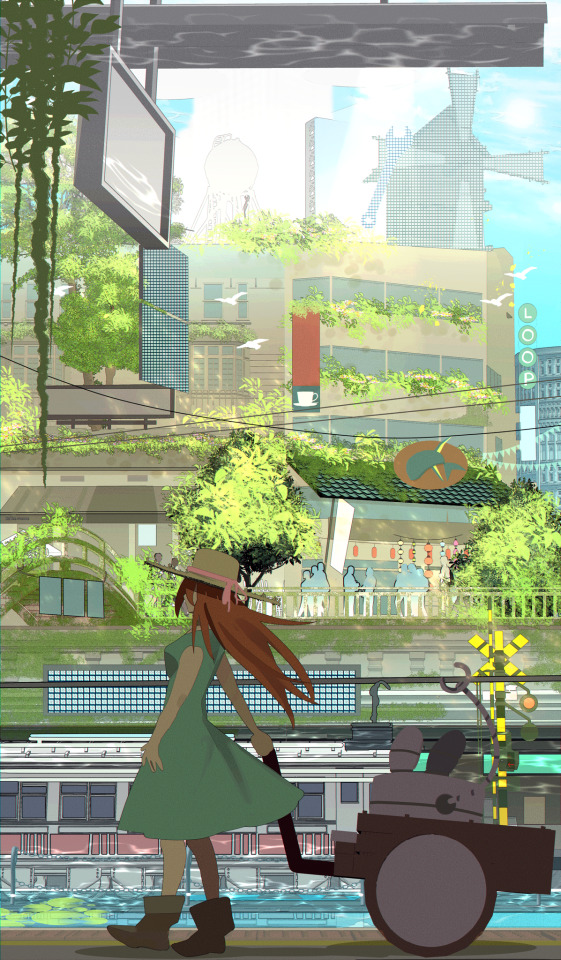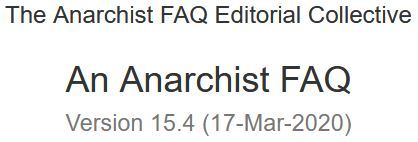#solarpunk
Text





Happy.
My sapphic/ solarpunk webcomic FACING THE SUN has new pages and the whole thing is free to read!
| Read on my website (ahead)
| Read on WEBTOON
| Support the Comic
155 notes
·
View notes
Text
So a while ago I commissioned @thefruitloop-chan to make a Solarpunk poster for anyone to use! And this beautiful piece was made!

This is a blank for people to put text on, and here’s the two text ones that I put over


Anyone can print them and put them up and around town! Especially since it’s Solarpunk Action Week! Thank you again Squid for making this beautiful artwork! Let’s make a better future together!
#solarpunk#solarpunk art#solarpunk action week#poster#I plan on printing these bad boys tomorrow or so and putting around my local area#also if someone else puts text up on the blank one share it pls I wanna see what y’all come up with!
168 notes
·
View notes
Text
A lot of people are radicalised by suffering, which is a valid and sadly all-too-common experience. But you wanna know what really radicalised me? Softness. Joy. Freedom. I spent so much of my adolescence deeply sad and uncomfortable in spaces that weren’t right for me, navigating a body that didn’t feel like home. Despite many many privileges, and lots of moments of genuine happiness, I often didn’t overall enjoy my life. But then I got gender-affirming surgery. I moved into my own modern, clean, comfortable flat in a friendly, walkable city full of nature and beautiful buildings. I started being able to take care of myself. I keyed into robust local social networks of people who shared my interests in nature, creativity and ameliorating the world. And I am deeply, thoroughly content. It has been incredibly radicalising to realise that, contrary to what I thought for so long, it is very easy for human beings to be happy if their material and emotional needs are fulfilled. So alongside my joy there’s this constant simmering rage. I deserve all the good things I have now, sure. But not any more or less than anyone else. The children being bombed deserve this too. So do the homeless people being moved on by police outside my local supermarket. So do the people starving in famines, imprisoned by immigration systems, brutalised by their employers, their families, the state. All I can do is fight for a world where everyone has these things. It’s a choice not to share them equitably.
#solarpunk#hopepunk#cottagepunk#environmentalism#social justice#community#optimism#bright future#climate justice#happiness#rage#equity#taking care of people#fairness#privilege#what radicalised you#joy
130 notes
·
View notes
Text
https://heidi-967.ludgu.top/pu/zRbpAVr
#fanfic#mob psycho 100#ouran high school host club#oracle cards#the night manager#dreamtale#y2kcore#nintendo#feysand#runblr#solarpunk
121 notes
·
View notes
Text
Fewer than 60 multinationals are responsible for more than half of the world’s plastic pollution, with five responsible for a quarter of that, based on the findings
The branded half of the plastic was the responsibility of just 56 fast-moving consumer goods multinational companies, and a quarter of that was from just five companies.
Altria [Kraft] and Philip Morris International made up 2% of the branded plastic litter found, Danone and Nestlé produced 3% of it, PepsiCo was responsible for 5% of the discarded packaging, and 11% of branded plastic waste could be traced to the Coca-Cola company.
“The industry likes to put the responsibility on the individual,” says the study’s author, Marcus Eriksen, a plastic pollution expert from The 5 Gyres Institute.
“But we’d like to point out that it’s the brands, it’s their choice for the kinds of packaging [they use] and for embracing this throwaway model of delivering their goods. That’s what’s causing the greatest abundance of trash.”
#solarpunk#solar punk#fuck the brands#I am stopping buying these brands#fuck capitalism#they blame us#boycott
49 notes
·
View notes
Text
It’s Solarpunk Action Week!
This week I’m writing a letter to my rep concerning a bit of legislation that didn’t make it through our state’s house. Because posting the unedited letter would be doxing myself, I’m posting a censored version. You can probably figure out the state pretty easily but please don’t try to, thanks.

In order to write the letter I had to find a piece of legislation that interested me. I looked up “‘my state’ climate legislation and then poked around until I found something. I wanted to do something local. I feel like I’m more likely to be heard that way—this guy probably has like 1000-2000 constituents, so I don’t think my letter will get lost in the scuffle.
I tried to use persuasive language and write clearly and respectfully. Here are some of the sources I used to format it: [1], [2]. The second one is for children but I still found it pretty helpful. Your Rep’s mailing address or email should be publicly available online, which makes it pretty easy to send.
I would highly recommend doing this! I learned so much about local politics researching it that even if I don’t get a response (which I probably will) it definitely wasn’t a waste of time.
25 notes
·
View notes
Text

A.2.8 Is it possible to be an anarchist without opposing hierarchy?
No. We have seen that anarchists abhor authoritarianism. But if one is an anti-authoritarian, one must oppose all hierarchical institutions, since they embody the principle of authority. For, as Emma Goldman argued, “it is not only government in the sense of the state which is destructive of every individual value and quality. It is the whole complex authority and institutional domination which strangles life. It is the superstition, myth, pretence, evasions, and subservience which support authority and institutional domination.” [Red Emma Speaks, p. 435] This means that “there is and will always be a need to discover and overcome structures of hierarchy, authority and domination and constraints on freedom: slavery, wage-slavery [i.e. capitalism], racism, sexism, authoritarian schools, etc.” [Noam Chomsky, Language and Politics, p. 364]
Thus the consistent anarchist must oppose hierarchical relationships as well as the state. Whether economic, social or political, to be an anarchist means to oppose hierarchy. The argument for this (if anybody needs one) is as follows:
“All authoritarian institutions are organised as pyramids: the state, the private or public corporation, the army, the police, the church, the university, the hospital: they are all pyramidal structures with a small group of decision-makers at the top and a broad base of people whose decisions are made for them at the bottom. Anarchism does not demand the changing of labels on the layers, it doesn’t want different people on top, it wants us to clamber out from underneath.” [Colin Ward, Anarchy in Action, p. 22]
Hierarchies “share a common feature: they are organised systems of command and obedience” and so anarchists seek “to eliminate hierarchy per se, not simply replace one form of hierarchy with another.” [Bookchin, The Ecology of Freedom, p. 27] A hierarchy is a pyramidally-structured organisation composed of a series of grades, ranks, or offices of increasing power, prestige, and (usually) remuneration. Scholars who have investigated the hierarchical form have found that the two primary principles it embodies are domination and exploitation. For example, in his classic article “What Do Bosses Do?” (Review of Radical Political Economy, Vol. 6, No. 2), a study of the modern factory, Steven Marglin found that the main function of the corporate hierarchy is not greater productive efficiency (as capitalists claim), but greater control over workers, the purpose of such control being more effective exploitation.
Control in a hierarchy is maintained by coercion, that is, by the threat of negative sanctions of one kind or another: physical, economic, psychological, social, etc. Such control, including the repression of dissent and rebellion, therefore necessitates centralisation: a set of power relations in which the greatest control is exercised by the few at the top (particularly the head of the organisation), while those in the middle ranks have much less control and the many at the bottom have virtually none.
Since domination, coercion, and centralisation are essential features of authoritarianism, and as those features are embodied in hierarchies, all hierarchical institutions are authoritarian. Moreover, for anarchists, any organisation marked by hierarchy, centralism and authoritarianism is state-like, or “statist.” And as anarchists oppose both the state and authoritarian relations, anyone who does not seek to dismantle all forms of hierarchy cannot be called an anarchist. This applies to capitalist firms. As Noam Chomsky points out, the structure of the capitalist firm is extremely hierarchical, indeed fascist, in nature:
“a fascist system… [is] absolutist — power goes from top down … the ideal state is top down control with the public essentially following orders.
“Let’s take a look at a corporation… [I]f you look at what they are, power goes strictly top down, from the board of directors to managers to lower managers to ultimately the people on the shop floor, typing messages, and so on. There’s no flow of power or planning from the bottom up. People can disrupt and make suggestions, but the same is true of a slave society. The structure of power is linear, from the top down.” [Keeping the Rabble in Line, p. 237]
David Deleon indicates these similarities between the company and the state well when he writes:
“Most factories are like military dictatorships. Those at the bottom are privates, the supervisors are sergeants, and on up through the hierarchy. The organisation can dictate everything from our clothing and hair style to how we spend a large portion of our lives, during work. It can compel overtime; it can require us to see a company doctor if we have a medical complaint; it can forbid us free time to engage in political activity; it can suppress freedom of speech, press and assembly — it can use ID cards and armed security police, along with closed-circuit TVs to watch us; it can punish dissenters with ‘disciplinary layoffs’ (as GM calls them), or it can fire us. We are forced, by circumstances, to accept much of this, or join the millions of unemployed… In almost every job, we have only the ‘right’ to quit. Major decisions are made at the top and we are expected to obey, whether we work in an ivory tower or a mine shaft.” [“For Democracy Where We Work: A rationale for social self-management”, Reinventing Anarchy, Again, Howard J. Ehrlich (ed.), pp. 193–4]
Thus the consistent anarchist must oppose hierarchy in all its forms, including the capitalist firm. Not to do so is to support archy — which an anarchist, by definition, cannot do. In other words, for anarchists, ”[p]romises to obey, contracts of (wage) slavery, agreements requiring the acceptance of a subordinate status, are all illegitimate because they do restrict and restrain individual autonomy.” [Robert Graham, “The Anarchist Contract, Reinventing Anarchy, Again, Howard J. Ehrlich (ed.), p. 77] Hierarchy, therefore, is against the basic principles which drive anarchism. It denies what makes us human and “divest[s] the personality of its most integral traits; it denies the very notion that the individual is competent to deal not only with the management of his or her personal life but with its most important context: the social context.” [Murray Bookchin, Op. Cit., p. 202]
Some argue that as long as an association is voluntary, whether it has a hierarchical structure is irrelevant. Anarchists disagree. This is for two reasons. Firstly, under capitalism workers are driven by economic necessity to sell their labour (and so liberty) to those who own the means of life. This process re-enforces the economic conditions workers face by creating “massive disparities in wealth … [as] workers… sell their labour to the capitalist at a price which does not reflect its real value.” Therefore:
“To portray the parties to an employment contract, for example, as free and equal to each other is to ignore the serious inequality of bargaining power which exists between the worker and the employer. To then go on to portray the relationship of subordination and exploitation which naturally results as the epitome of freedom is to make a mockery of both individual liberty and social justice.” [Robert Graham, Op. Cit., p. 70]
It is for this reason that anarchists support collective action and organisation: it increases the bargaining power of working people and allows them to assert their autonomy (see section J).
Secondly, if we take the key element as being whether an association is voluntary or not we would have to argue that the current state system must be considered as “anarchy.” In a modern democracy no one forces an individual to live in a specific state. We are free to leave and go somewhere else. By ignoring the hierarchical nature of an association, you can end up supporting organisations based upon the denial of freedom (including capitalist companies, the armed forces, states even) all because they are “voluntary.” As Bob Black argues, ”[t]o demonise state authoritarianism while ignoring identical albeit contract-consecrated subservient arrangements in the large-scale corporations which control the world economy is fetishism at its worst.” [The Libertarian as Conservative, The Abolition of Work and other essays, p. 142] Anarchy is more than being free to pick a master.
Therefore opposition to hierarchy is a key anarchist position, otherwise you just become a “voluntary archist” — which is hardly anarchistic. For more on this see section A.2.14 ( Why is voluntarism not enough?).
Anarchists argue that organisations do not need to be hierarchical, they can be based upon co-operation between equals who manage their own affairs directly. In this way we can do without hierarchical structures (i.e. the delegation of power in the hands of a few). Only when an association is self-managed by its members can it be considered truly anarchistic.
We are sorry to belabour this point, but some capitalist apologists, apparently wanting to appropriate the “anarchist” name because of its association with freedom, have recently claimed that one can be both a capitalist and an anarchist at the same time (as in so-called “anarcho” capitalism). It should now be clear that since capitalism is based on hierarchy (not to mention statism and exploitation), “anarcho”-capitalism is a contradiction in terms. (For more on this, see Section F)
#faq#anarchy faq#revolution#anarchism#daily posts#communism#anti capitalist#anti capitalism#late stage capitalism#organization#grassroots#grass roots#anarchists#libraries#leftism#social issues#economy#economics#climate change#climate crisis#climate#ecology#anarchy works#environmentalism#environment#solarpunk#anti colonialism#mutual aid#cops#police
26 notes
·
View notes
Text

Found this as a WIP on my ipad and decided to finish it. The file was named "chrysanthemum" so I think I abandoned this painting in the middle of a flower-themed challenge haha. I'm gonna try to get back on my terrarium-robots. Anyway, Glaze and Nightshade are pretty cool~
#artists on tumblr#artists on instagram#digital art#digital painting#women in animation#art#illustration#concept art#solarpunk#solar punk#terrarium#chrysanthemum#painting#visual development
27 notes
·
View notes
Text


heart envelope wallet/card holder 💌 made on my beloved 70 yr old singer sewing machine with salvaged cotton & a vintage faux pearl button. the heart buttonhole is made with felt and hand stitched on ❤️
etsy // patreon
#mine#my art#art#embroidery#textile art#fiber art#textiles#fashion#sewing#solarpunk#vintage#heart aesthetic#love aesthetic#slow fashion#handmade fashion#handmade#heartcore#lovecore#wearable art#upcycled#pearl#heart#coquette#stitching#artists on tumblr#fashion design
20 notes
·
View notes
Text




Lots of foraging today.
(flowers: mayweed, dandelion, dead nettle, violet, ground clover, henbit, cranesbill
leaves: chicory, dandelion, plantain, ground clover)
#nature#forage#foraging#eat the weeds#naturecore#solarpunk#edible plants#nature photography#cottagecore#plants#medicinal plants
20 notes
·
View notes
Text
53K notes
·
View notes
Text
Bro, you ok? Bro, humans aren’t separate from the ecosystems around us. We’re a part of them, bro. Bro, we’re never going to have absolutely zero effect on ecosystems, because we live here, bro. Bro, I never said it had to be a bad effect. We don’t have to immediately be perfect either, bro, sometimes doing what you can is what you can, and its way better than nothing. Bro what do you mean humans are a plague. You’re starting to sound a bit like an ecofascist, bro… Bro?
48K notes
·
View notes
Text
No paywall version here.
"Two and a half years ago, when I was asked to help write the most authoritative report on climate change in the United States, I hesitated...
In the end, I said yes, but reluctantly. Frankly, I was sick of admonishing people about how bad things could get. Scientists have raised the alarm over and over again, and still the temperature rises. Extreme events like heat waves, floods and droughts are becoming more severe and frequent, exactly as we predicted they would. We were proved right. It didn’t seem to matter.
Our report, which was released on Tuesday, contains more dire warnings. There are plenty of new reasons for despair. Thanks to recent scientific advances, we can now link climate change to specific extreme weather disasters, and we have a better understanding of how the feedback loops in the climate system can make warming even worse. We can also now more confidently forecast catastrophic outcomes if global emissions continue on their current trajectory.
But to me, the most surprising new finding in the Fifth National Climate Assessment is this: There has been genuine progress, too.
I’m used to mind-boggling numbers, and there are many of them in this report. Human beings have put about 1.6 trillion tons of carbon in the atmosphere since the Industrial Revolution — more than the weight of every living thing on Earth combined. But as we wrote the report, I learned other, even more mind-boggling numbers. In the last decade, the cost of wind energy has declined by 70 percent and solar has declined 90 percent. Renewables now make up 80 percent of new electricity generation capacity. Our country’s greenhouse gas emissions are falling, even as our G.D.P. and population grow.
In the report, we were tasked with projecting future climate change. We showed what the United States would look like if the world warms by 2 degrees Celsius. It wasn’t a pretty picture: more heat waves, more uncomfortably hot nights, more downpours, more droughts. If greenhouse emissions continue to rise, we could reach that point in the next couple of decades. If they fall a little, maybe we can stave it off until the middle of the century. But our findings also offered a glimmer of hope: If emissions fall dramatically, as the report suggested they could, we may never reach 2 degrees Celsius at all.
For the first time in my career, I felt something strange: optimism.
And that simple realization was enough to convince me that releasing yet another climate report was worthwhile.
Something has changed in the United States, and not just the climate. State, local and tribal governments all around the country have begun to take action. Some politicians now actually campaign on climate change, instead of ignoring or lying about it. Congress passed federal climate legislation — something I’d long regarded as impossible — in 2022 as we turned in the first draft.
[Note: She's talking about the Inflation Reduction Act and the Infrastructure Act, which despite the names were the two biggest climate packages passed in US history. And their passage in mid 2022 was a big turning point: that's when, for the first time in decades, a lot of scientists started looking at the numbers - esp the ones that would come from the IRA's funding - and said "Wait, holy shit, we have an actual chance."]
And while the report stresses the urgency of limiting warming to prevent terrible risks, it has a new message, too: We can do this. We now know how to make the dramatic emissions cuts we’d need to limit warming, and it’s very possible to do this in a way that’s sustainable, healthy and fair.
The conversation has moved on, and the role of scientists has changed. We’re not just warning of danger anymore. We’re showing the way to safety.
I was wrong about those previous reports: They did matter, after all. While climate scientists were warning the world of disaster, a small army of scientists, engineers, policymakers and others were getting to work. These first responders have helped move us toward our climate goals. Our warnings did their job.
To limit global warming, we need many more people to get on board... We need to reach those who haven’t yet been moved by our warnings. I’m not talking about the fossil fuel industry here; nor do I particularly care about winning over the small but noisy group of committed climate deniers. But I believe we can reach the many people whose eyes glaze over when they hear yet another dire warning or see another report like the one we just published.
The reason is that now, we have a better story to tell. The evidence is clear: Responding to climate change will not only create a better world for our children and grandchildren, but it will also make the world better for us right now.
Eliminating the sources of greenhouse gas emissions will make our air and water cleaner, our economy stronger and our quality of life better. It could save hundreds of thousands or even millions of lives across the country through air quality benefits alone. Using land more wisely can both limit climate change and protect biodiversity. Climate change most strongly affects communities that get a raw deal in our society: people with low incomes, people of color, children and the elderly. And climate action can be an opportunity to redress legacies of racism, neglect and injustice.
I could still tell you scary stories about a future ravaged by climate change, and they’d be true, at least on the trajectory we’re currently on. But it’s also true that we have a once-in-human-history chance not only to prevent the worst effects but also to make the world better right now. It would be a shame to squander this opportunity. So I don’t just want to talk about the problems anymore. I want to talk about the solutions. Consider this your last warning from me."
-via New York Times. Opinion essay by leading climate scientist Kate Marvel. November 18, 2023.
#WE CAN DO THIS#I SO TRULY BELIEVE THAT WE CAN DO THIS#WE CAN SAVE OURSELVES AND THE WORLD ALONG WITH US#climate crisis#united states#climate change#conservation#hope posting#sustainability#climate news#climate action#climate emergency#fossil fuels#global warming#environmentalism#climate hope#solarpunk#climate optimism#climate policy#earth#science#climate science#meteorology#extreme weather#renewable energy#solar power#wind power#renewables#carbon emissions#climate justice
33K notes
·
View notes
Text
You know how companies used to make flour sacks with pretty flower patterns on them because mothers would make dresses out of them for their daughters? We should bring that back. Paper bags designed to be reused as wrapping paper. Jars of jam designed to look nice filled with pencils or homemade sauces. Fabric that's high quality enough to use as a patch.
Give things a second life!!
25K notes
·
View notes

